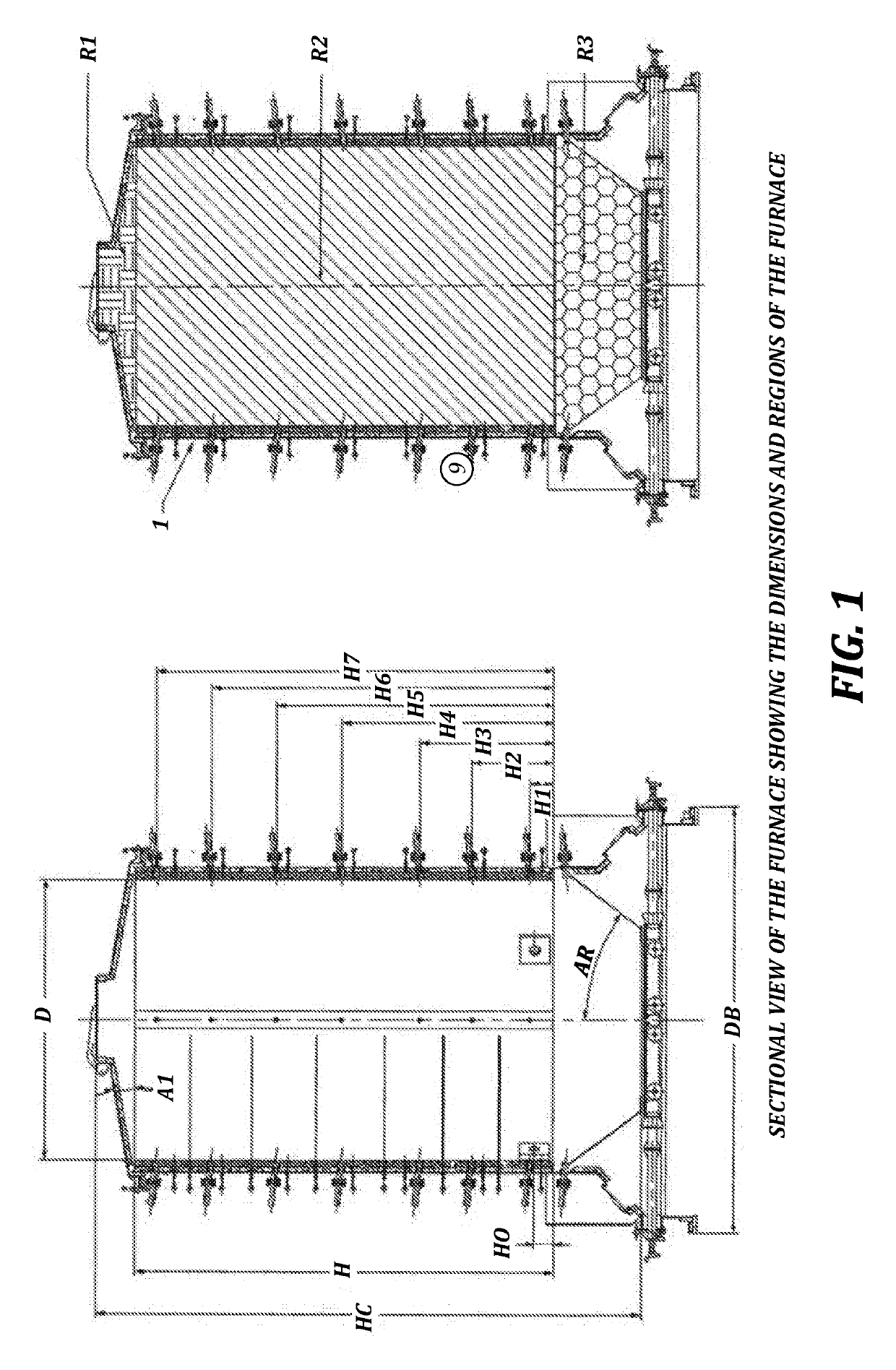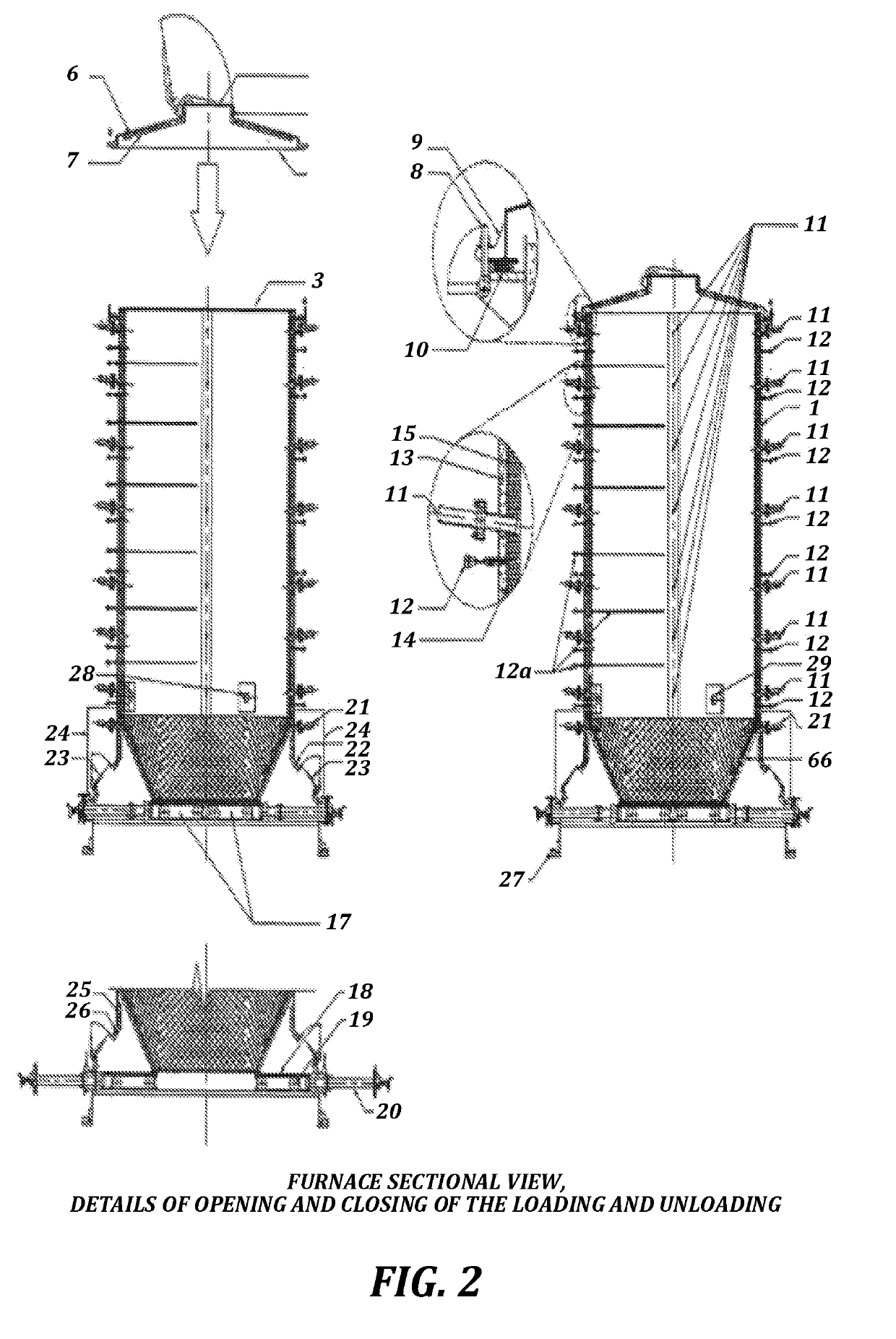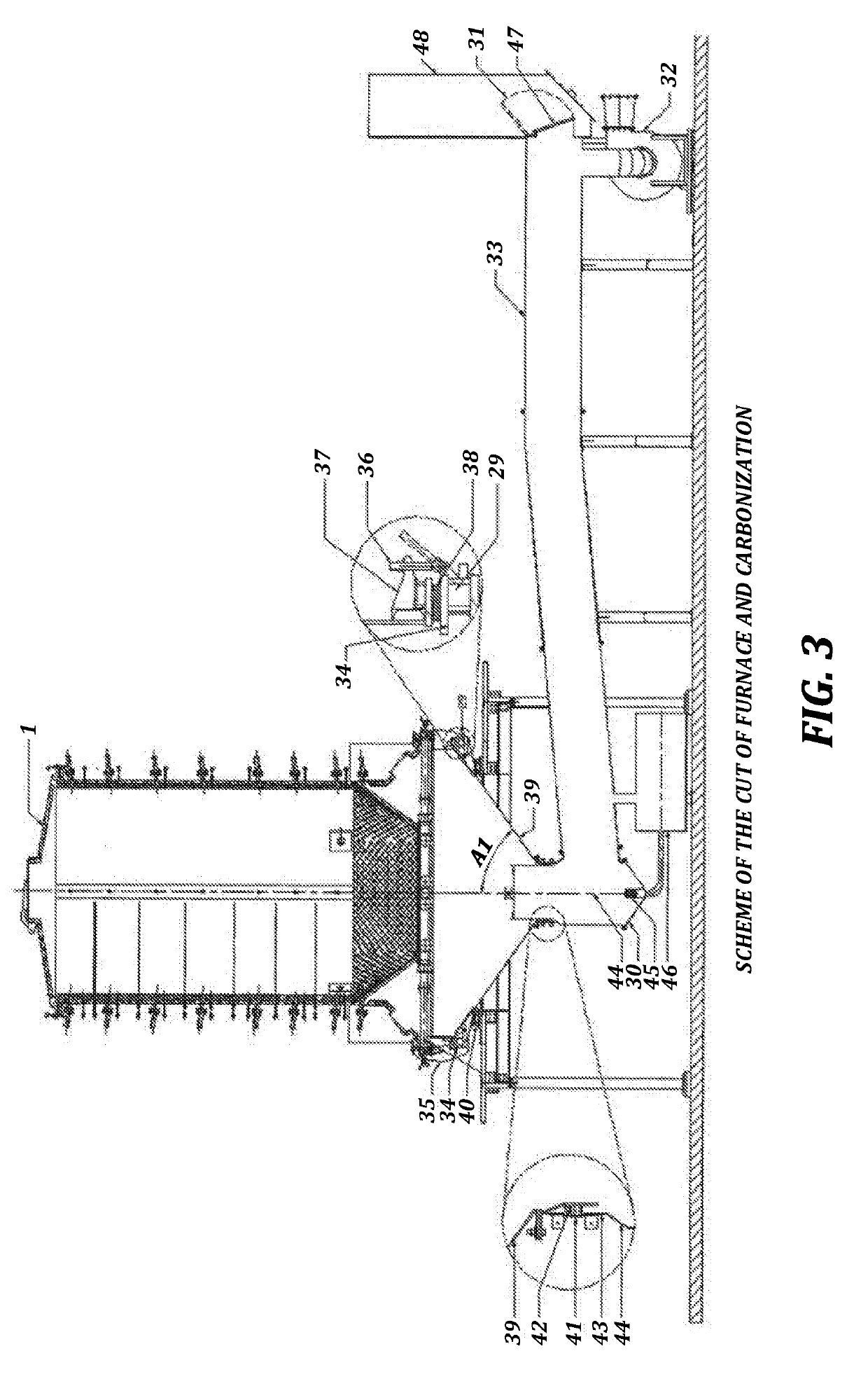Industrial process using a forced-exhaust metal furnace and mechanisms developed for simultaneously producing coal, fuel gas, pyroligneous extract and tar
a metal furnace and industrial process technology, applied in the direction of mechanical equipment, mechanical conveying coke ovens, machines/engines, etc., can solve the problems of high production cycle, high energy waste, and high production cost, and achieve the effect of reducing the number of furnace operators, and reducing the number of furnaces
- Summary
- Abstract
- Description
- Claims
- Application Information
AI Technical Summary
Benefits of technology
Problems solved by technology
Method used
Image
Examples
application examples
[0101]Below, it will be shown a series of possible configurations for the invention, which aim illustrate its several uses. And, although it can be exemplified by, it is not limited to the examples that follow.
example 1
[0102]The industrial furnace of production of charcoal with capacity for 35 m3 can be loaded by the upper hole with wood cavacos, average granulometry between 100 and 120 mm. The furnace, already with the cover placed and locked, is placed on the carbonization system and locked on the movable support base. The exhauster is then switched on and the ignition on specific points, with ember, starts. The carbonization control by the opening and closing of the holes follows in order to provide energy for the endothermic phase. The process ends in about 3 hours, producing 2400 kg of charcoal with gravimetric yield of 33%.
example 2
[0103]The industrial furnace for charcoal production with a capacity of 35 m3 can be loaded by the upper hole with wood small logs, average size of 200 mm. The furnace already with the cover placed and locked, is placed on the carbonization system and locked on the movable support base. The exhauster is then switched on and the ignition on specific points, with ember, starts. The carbonization control by the opening and closing of the orifices follows in order to provide energy for the endothermic phase. The process ends in about 5 hours, producing 2800 kg of charcoal with gravimetric yield of 35%.
PUM
| Property | Measurement | Unit |
|---|---|---|
| flow velocity | aaaaa | aaaaa |
| flow rate | aaaaa | aaaaa |
| flow rate | aaaaa | aaaaa |
Abstract
Description
Claims
Application Information
 Login to View More
Login to View More - R&D
- Intellectual Property
- Life Sciences
- Materials
- Tech Scout
- Unparalleled Data Quality
- Higher Quality Content
- 60% Fewer Hallucinations
Browse by: Latest US Patents, China's latest patents, Technical Efficacy Thesaurus, Application Domain, Technology Topic, Popular Technical Reports.
© 2025 PatSnap. All rights reserved.Legal|Privacy policy|Modern Slavery Act Transparency Statement|Sitemap|About US| Contact US: help@patsnap.com



